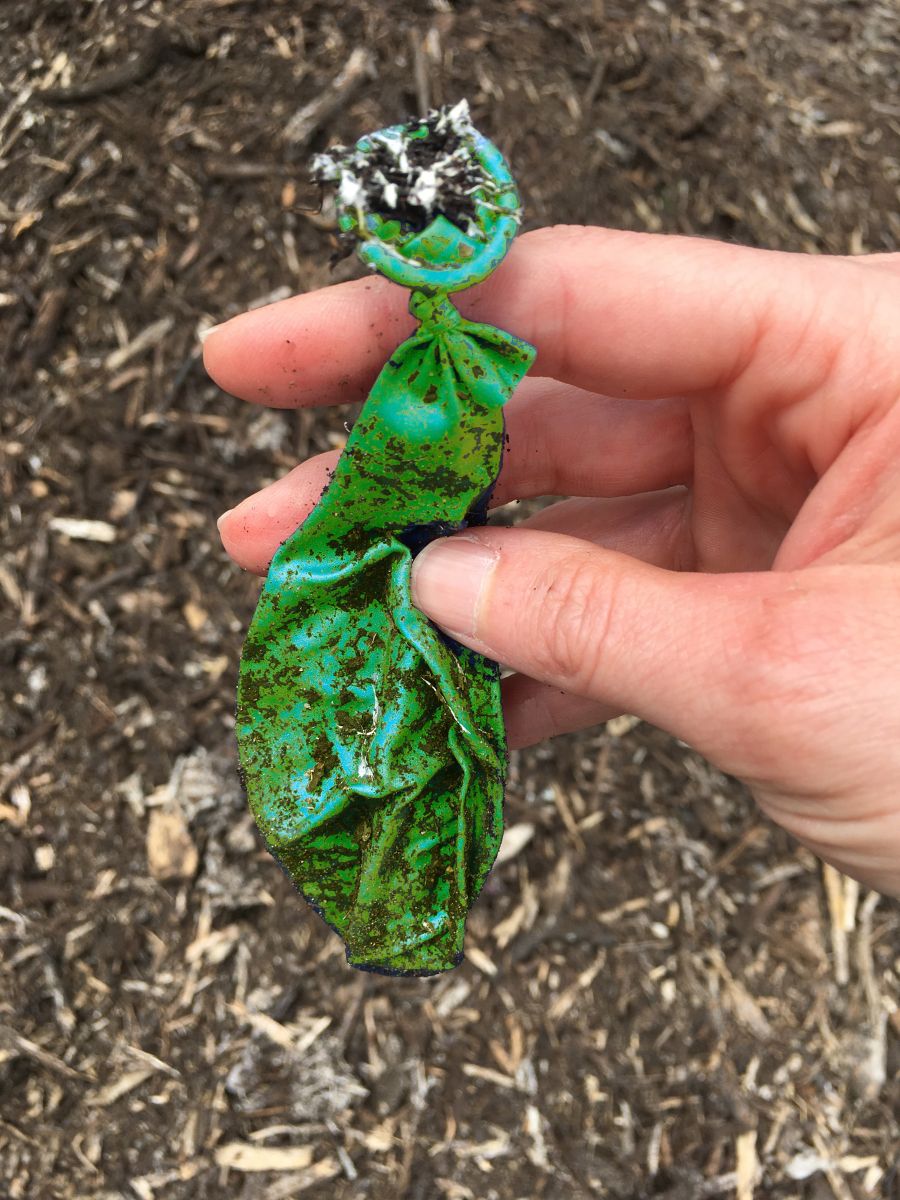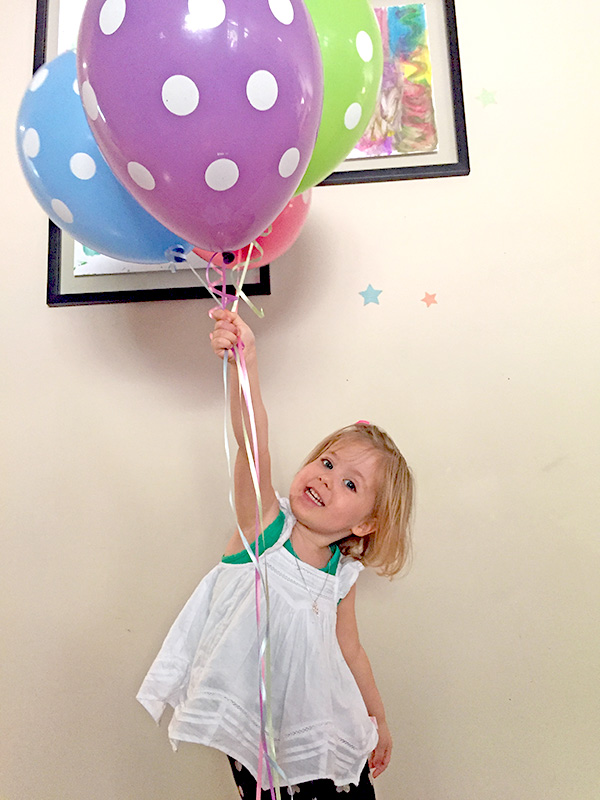Reusable Planet Blog: The Confronting Truth About Balloons
Author: Rachel Date Posted:14 July 2023

Party Pooper! Spoil Sport. Bor-ing! What is a party without balloons, or an event without a balloon release?
Well, nothing... If it‘s 1980 and we don’t know any better.
The fact is, it’s no longer the party killjoy it once was to say NO to balloons.
Why?
Numerous studies have shown balloons to be an environmental nightmare and a living cost to wildlife.
Helium balloons especially are an issue. Not a weekend goes by without seeing the tears of a child as they chase after an escaped helium balloon as it rises higher and higher into the air, just waiting for their 80dB wails to make the balloon realise its mistake and return back to earth and back into their adoring plump hands.
Though this hardly compares to the jarring spectacle of a deliberate release of hundreds or thousands of helium balloons to open a new business, farewell a friend or celebrate special occasions.
Helium balloons can drift for hours or even days if treated with hi-float liquid gel, and rise up to 10 km or higher, travelling with the wind for hundreds of kilometres.
But whether they burst into small pieces or slowly deflate, eventually they end up littering the environment, our waterways or ocean where, of course, animals and marine life (including seabirds and turtles) mistake them for food, to their ultimate detriment and likely painful demise.
Often, animals also become entangled in balloon attachments and strings, also with dire consequences.
A CSIRO study identified balloons among the top three most harmful pollutants threatening marine wildlife, along with plastic bags and bottles.
Balloons are the deadliest form of litter when ingested by seabirds, and are often found in the stomachs of dead animals. Studies have shown animals are up to 32 times more likely to die when they swallow balloons than any form of hard plastic.
ARE BALLOON RELEASES BANNED IN AUSTRALIA?
Well, yes, and no. Kinda.
In Queensland, Victoria, Tasmania, South Australia and Western Australia, a released helium balloon is considered littering, whether released deliberately or by accident. Some states threaten big fines for mass balloon releases.
The Northern Territory has plans to ban helium balloons by 2025.
In New South Wales and our Capital Territory however, it is still legal to do a mass balloon release of up to 19 inflatable balloons (with no attachments). This completely disregards direct scientific advice from Australian Marine Debris Initiative (AMDI), and ignores the NSW EPA’s recognition of the environmental damage that results from releasing helium balloons.
NSW also hates koalas. #Just Saying
The will of states to prosecute mass balloon releases is apparently pretty lacklustre, though it’s important to note that many Local Government Areas and even Event Organisers have banned the release or inclusion of balloons at their events.
Laws need to tighten up to specifically address deliberate helium balloon releases and the damage they cause, no doubt.
If you agree, you can add your name to the petition from the Australian Marine Conservation to get balloon releases banned, once and for all!
BEWARE OF “BIODEGRADABLE” BALLOONS
 Balloons can be made from nylon, or polychloroprene, which is a synthetic rubber.
Balloons can be made from nylon, or polychloroprene, which is a synthetic rubber.
But what about biodegradable latex balloons?
Yes, latex, which is made from natural rubber, is technically biodegradable. However, latex balloons can still take two or more years to biodegrade naturally in the environment. Meanwhile they still pose the same threat to wildlife.
Then there’s the issue of what chemical additives have been used in manufacturing. The addition of antidegradants and dyes can make balloons persist for longer, leaving chemical pollution behind.
And if that ‘biodegradable’ balloon ends up in the airless environment of landfill, degrading is likely to take decades or more, with the additives contributing to the toxic leachate that makes its way into our waterways.
What about foil balloons? Unfortunately, they are lined with plastic. They are technically recyclable, but as with most things, it is difficult. Here’s one solution
And to top it all off, let’s not forget about the pollution and waste from accessories. The plastic balloon sticks with cups, strings, ribbons and packaging.
GREAT ALTERNATIVES TO BALLOONS
I think most people would be happy to give up balloons if they knew the harm caused. Will you rethink balloons for your next event?
So where does that leave the decorating for the party? Well, here’s our best suggestions for alternatives to synthetic, latex or plastic-lined foil balloons for your next party or occasion.
- Flower bombs
- Ocean float
- Bubbles (everyone loves bubbles!)
- Paper balloons and decorations
- Paper and fabric banners
- Paper chains and streamers
- Paper flowers
- Paper pom poms
- Kites
CAN BALLOONS BE RECYCLED IN AUSTRALIA?
If you’re not ready to give balloons up just yet, make sure you keep them indoors and see our Instagram Post on how you can recycle balloons in Australia. But remember, reducing is always better than recycling.
Where do you sit in the balloon debate? Let us know in the comments, we'd love to hear your thoughts.
- - - - - - - - - - - - - - - - - - - - - - - - - - - -
All our blog articles written by Rachel or our Guest Bloggers are well researched by a real human person. We hope you have been informed, educated or entertained.
To read more eco living articles, head over to our main blog page.
If there is something you would like to see us write about, we’d love to hear from you! Send us an email or find us on our socials! We love spreading the message of reducing waste and the overuse of unnecessary plastic, so follow along and come be a change-maker with us!
Follow us on Instagram, Facebook or Twitter @ReusablePlanet or SUBSCRIBE and get weekly easy eco-living tips via email






